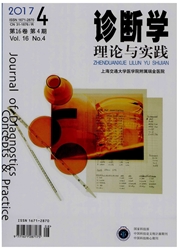

 中文摘要:
中文摘要:
目的:探索针对诱导性组织因子(TF)高表达的靶向抑制的方法,探讨针对TF启动子-247~-230区域的诱骗寡核苷酸对U937-PR9细胞中PML/RARα融合蛋白诱导的TF表达是否存在竞争性抑制作用。方法:采用诱骗寡核苷酸技术,模拟TF启动子-247~-230的序列.人工合成该片段的双链DNA.转染U937-PR9细胞.通过流式细胞术监测转染效率并确定最佳电转浓度.通过实时PCR和酶联免疫吸附试验等技术.比较转染前后加Zn“组与不加Zn^2+组的TF表达水平变化。结果:流式细胞术显示.10μmol/L电转浓度下能够实现高效转染.标记的寡核苷酸在细胞内能够稳定存在72h。未转染对照组中,加Zn^2+诱导后TF表达明显上升:转染组中.加Zn^2+诱导的TF表达水平与不加Zn^2+组几乎没有差异。结论:特异性诱骗寡核苷酸对TF诱导性高表达存在靶向的竞争性抑制作用.该方法为急性早幼粒细胞白血病TF高表达引发的并发症提供了靶向治疗的新思路。
 英文摘要:
英文摘要:
Objective Severe coagulopathy is a life-threatening complication of acute promyelocytic leukemia (APL) and is ascribable to the excessive level of tissue factor (TF) in APL cells. Studies have shown that in monocytic leukemia cell line (U937-PR9), TF is regulated in response to promyelocytic leukemia/retinoic acid receptor α (PML/RAα) fusion protein with interaction between PML/RARα and regulatory region (-247 to -230) of TF promoter in an indirect manner. This study is to investigate the inhibitory effect of the decoy oligonucleotides, corresponding to -247 to-230 region of TF promoter, on the over-expression of TF. Methods Decoy oligonucleotides, the synthetic double-stranded DNA sequence mimicking (-247 to -230) fragment of TF promoter, with phosphorothioate modification and FITC labeling, was electroporated into the cells to which Zn^2+ was added to induce PMI./RARα fusion protein expression. Electroporation was performed under different concentrations (0.1 μmol/L, 1 μmol/L, 5 μmol/L, 10 μmol/L) of decoy nucleotides. Flow cytometry (FCM) was employed for evaluation of the optimal concentration and efficiency of transfection. Real-time PCR and ELISA were performed to determine the expression of TF at both mRNA and protein levels. Results FCM showed that FITC-labeled oligonucleotides could be highly transfected at 10 μmol/L and the transfection was stable for 72 hours. In control group, induction by Zn^2+ resulted in a significant increase of TF expression. Treatment with decoy oligonucleotides led to a significant decrease of TF expression compared to Zn^2+ induced untreated group. Conclusions Decoy oligonucleotides corresponding to (-247 to - 230) sequences of TF promoter induces a competitive inhibition of TF expression, which indicates a potential transcription factor binding site in this region, suggesting an approach to specifically target the over-expression of TF in leukemia with high TF-induced complications.
 同期刊论文项目
同期刊论文项目
 同项目期刊论文
同项目期刊论文
 期刊信息
期刊信息
